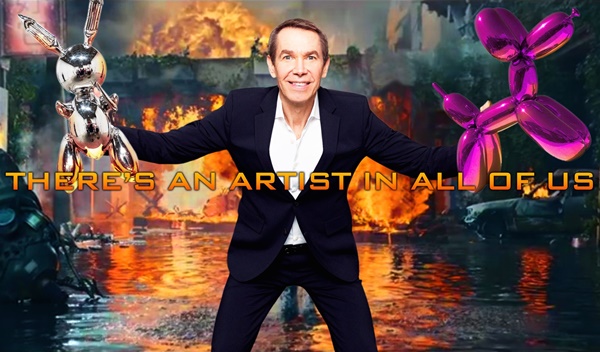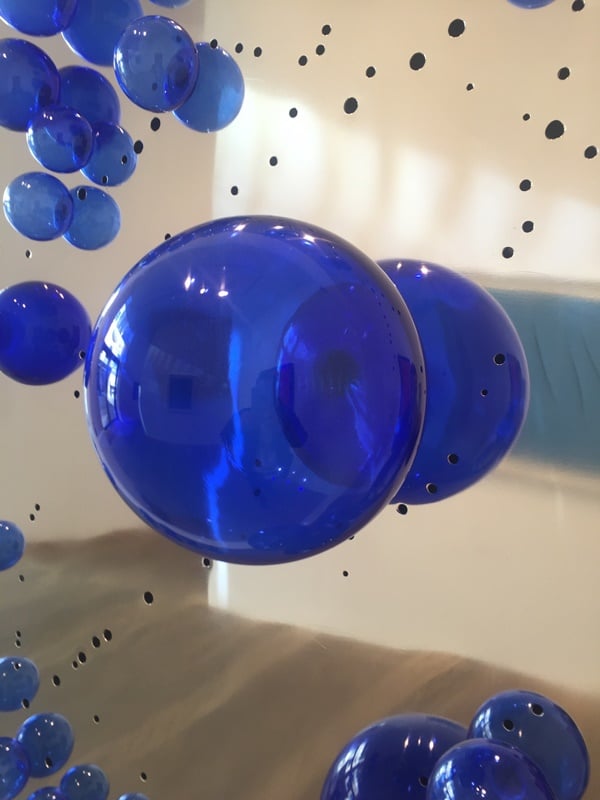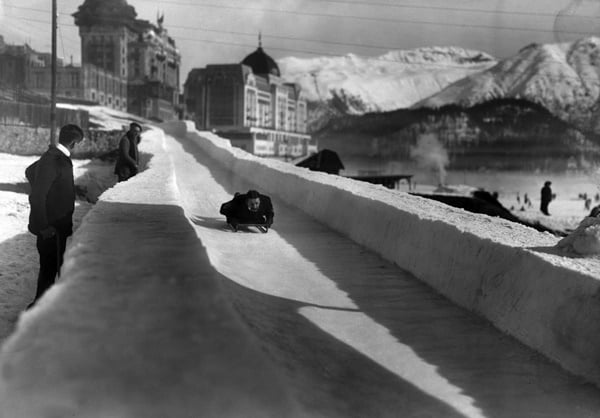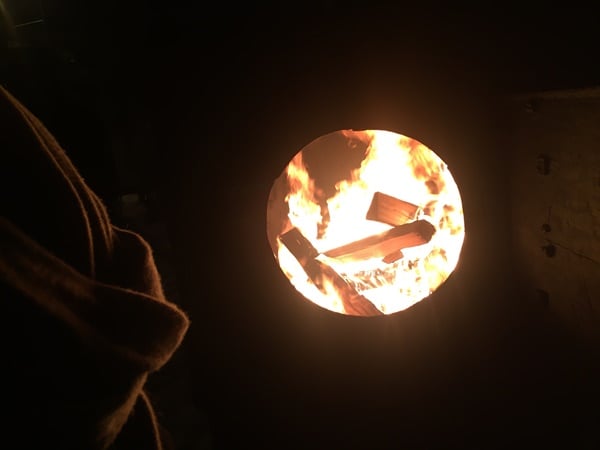Analysis
Kenny Schachter on the Debut of Vito Schnabel’s Gallery in St. Moritz
Even more so than in the past, St. Moritz has been Basel-ized by art worlders.

Even more so than in the past, St. Moritz has been Basel-ized by art worlders.

Kenny Schachter

At 1,822 meters in altitude, St. Moritz, in the Swiss Engadine Valley, is among the highest peaks in the Alps and a sporting mecca, having hosted the Winter Olympic Games in 1928 and 1948, one of only three cities to do so twice (besides Innsbruck, Austria and Lake Placid, New York). The physical effects of high elevation include faster breathing, increased heart rate, and lower mortality rates but a higher number of suicides; it’s as though you are charging through time at an accelerated pace, in addition to bombing down the mountain in the gear of your choice.
Aside from the altitude and skiing, etc., you’ll need all the boost you can muster as there are more galleries per square mile than any resort on the planet. Yippee. With the premiere of Vito Schnabel’s (b. 1986) space—it opened December 28 with Urs Fischer’s (b. 1966) Bruno & Yoyo and Sterling Ruby’s (b. 1972) Stoves—occupying the former digs of his godfather, Bruno Bischofberger (b. 1940), there’s now a new kid (literally) in town.
Even more so than in the past, St. Moritz has been Basel-ized by the art lifestyle and I am thrilled for my vocation and avocation. After 25 years of visiting my in-laws here, who are all annoyingly good skiers, I’m grateful it’s congealed into an art hub. Having recently hung up my snowboard (I was always the hesitant skier), I can’t complain too much about the shocking effects of global warming, which have reduced the usually-snowy slopes to a brown parched Arizona landscape. But even the smell of the uncovered fields of grass can’t quash the strong whiff of cash. By way of a disclaimer, this piece is being posted while I’m still in the enclave (and will be for the rest of the holiday), so I proceed with caution and more deference than usual.

Kenny Schachter, Call of Duty.
Image: Courtesy of Kenny Schachter
It’s fitting that Bruno is both the subject of Fischer’s latest sculpture and the former tenant of the space because he is the godparent to more than Vito. Having first opened his space in 1963, Bruno nurtured and championed artists as far afield as Jean Tinguely (1925-1991), Yves Klein (1928-1962), Roy Lichtenstein (1923-1997), Robert Rauschenberg (1925-2008), Jasper Johns (b. 1930), Bruce Nauman (b. 1941), Dan Flavin (1933-1996), Donald Judd (1928-1994), On Kawara (1933-2014), Schnabel Sr. (b. 1951), and Jean Michel Basquiat (1960-1988), to name but a few. Among countless other contributions, Bruno gave Gerhard Richter (b. 1932), an Engadine regular, his first show outside of Germany in 1966. In 1968, he attained a right-of-first-refusal contract with Andy Warhol (1928-1987) that lasted until his death.
If possible, even more astounding than Bruno’s dealing activities is the legendary breadth and encyclopedic depth of his acquired-by-any-means art and design collections. From Engadine furniture, Swiss folk art, historic glass and ceramic works to modernist chairs and works from the 1980s, Bischofberger has experienced life through his relentless acquisitiveness that has never ceased to stagger and stimulate me (and countless others). Having closed his St. Moritz and Zurich spaces, he’s opening a series of buildings in stages (designed by his daughter Nina Baier-Bischofberger and her husband Florian) to house his vast treasures, a fully fleshed memoir in objects.
A spiritual hoarder, Bruno is my hero—I love art dealers for the ruthlessness of their unquestionable, unquenchable passion for art. They make the most strident supporters that don’t need to be sold. Dealers are rarely favorably spoken of or decorated; they are the unsung worker bees of the art world and perhaps should be celebrated more. Dealers make money selling art but make wealth hanging onto it; Bruno changed the game.
The hotels of St. Moritz, which bills itself as the Top of the World (in prices anyway), recall the sanitarium in Thomas Mann’s (1875-1955) The Magic Mountain. They are places for rest cures and rejuvenation but with plenty of soul searching discord played out in the corridors, rooms, and restaurants. The Suvretta House, the most Mann-ian of all the hotels in St. Moritz, is where I appropriately enough met up with Venus over Manhattan’s Adam Lindemann (b. 1961) on my arrival.

Image: Courtesy of Kenny Schachter
There is no particular reason Adam and I should be close in such a zero-sum environment. We’ve both written on the market and deal and collect art and classic cars, though never together. But I have enormous respect for his program and that he soldiers on with two ambitious venues doing shows not many others would undertake, including H.C. Westermann (1922-1981), Peter Saul (b. 1934) and Katherine Bernhardt (b. 1975). We begrudgingly accept each other, as the art world is still too small to alienate your frenemies. As we chatted in the bar powerhouse dealer Dominique Levy (b. 1967) whizzed by. Welcome to St. Moritz.
Adam’s enthusiasms towards cars have shifted up a gear (apologies) to the extent that he’s in all probability the first to have guaranteed a vehicle at public auction in August of this year: a 1953 Jaguar C-Type Works Lightweight in the RM Sotheby’s auction in Monterey that sold for $13,200,00. He killed it.
Departing the hotel I bumped into a guest who told me he was an avid reader of my columns but that they were generally too long—there’s no hiding and just when I digest that everyone’s an artist, now you can add critic to the list. But okay, I will give brevity a shot to account for shortened holiday attention spans, but not before mentioning that I lobbed a sales pitch for a Bruce Nauman work to a hedge-funder I had just met in the lobby.
Sorry to go off piste again but mention must be made of the notorious Cresta Run, an ice skeleton racing toboggan track privately administered by the St. Moritz Tobogganing Club (mostly Brits) since 1887. It’s a suicidal headfirst lunge down a Matthew Barney-esque, claustrophobic ice chamber that you make on a small but weighty steel luge while you’re feet are outfitted with modified hockey skates (that have rakes affixed to the toes for braking), and your hands, knees and elbows are given primitive leather and wrought iron guards.

Skeleton tobogganers race in 1914 on the Cresta Run in St. Moritz.
Image: swiss-image.ch/M. Weintraub via Forbes.com
It’s a badge of courage if, while descending Cresta Run, you fly off the corner called Shuttlecock, a notorious sweeping left hander protected by bales of hay, after which you automatically become a member of the Shuttlecock Club and are entitled to wear a Shuttlecock tie (available from the gift shop). You garner even more bragging rights if you wipe out and your spine pokes out of your skin or you lose a finger; I’d sooner resume snowboarding, or master Russian roulette.
But after a few drinks at a dinner with my kids and their friend, a member and avid racer, I foolishly volunteered us for a guest’s day initiation into this rite of dread and horror—all for the princely sum of 600 CHF per head (or what was to be left of it). The following morning, sobriety laid rest to my plans but there was no turning back.
Women are only permitted once per year, probably due to the impending threat of competition. When Adrian, my 19-year-old son, flew off first, I died a slow death. There is no room for fear; it’s more a matter of survival as you violently careen from side to side while flying down the near-vertical bends and hang on to the slab of metal for dear life after being, what felt like, shot from a gun. There aren’t many less appealing experiences that I can think of. Adrian ended up first out of the entire group and is now proudly sporting a Shuttlecock tie.

Image: Courtesy of Kenny Schachter
Back to gallery land: Robilant + Voena of Milan and London opened last season and is hosting a Lucio Fontana (1899-1968) show till January 10, highlights of which include a red triple slash-er from 1968 for €5.8 million and a collaboration with Fontana and Egidio Costantini (1912-2007) from 1965 consisting of perforated metal and 17 glass blue balls affixed to the surface, out Koons-ing Jeff Koons (b. 1955) decades ago (€1,2 million).
Karsten Greve (b. 1946) who early on exhibited Cy Twombly (1928-2011), John Chamberlin (1927-2011), Louise Bourgeois (1911-2010), Janis Kounellis (b. 1936) and Fontana opened in St. Moritz in 1999. But was closed the day I visited, I guess he simply couldn’t be bothered; his reticence is larger-than-life and endearing. Gmurzynska Gallery has Allen Jones’ (b. 1937) new paintings and Andrea Caratsch has a photography show with Araki (b. 1940), David LaChappelle (1963), Helmut Newton (1920-2004) and Pierret et Gilles (b. 1950 and 1953 respectively), neither of which I’m too excited to see.
The intrepid Stefan Hildebrandt is featuring Antonio Calderara (1903-1978) and Doris Ammann is also in town (without a gallery but always great works on view) as is Norman and Elena Foster, residing in Chesa Futura, the kidney bean shaped apartment building he designed out of 275,000 wooden shingles, weathered into two distinct shades of russet, a beautiful, evolving state of decay.

Image: Courtesy of Kenny Schachter
Among the regulars filing into into town this week were members of the Sterling or Urs camps, but the troops descended in droves. Vito consigned two giant Ruby stoves from Gagosian, at the time of the opening one was sold for $350k, while the works from Fischer came via the free agency of the artist and ranged from silkscreened prints of eyes at $500k a piece (there were three unique “paintings”) and a set of lifelike psychedelic candles of Bruno and his fabulous wife Yoyo (artwhizz on Instagram) reassuringly resting her arm on his, edition of 2 with an artist proof at $1.2 each. The perfect positive effigies for lives spent deep in art surrounded by the eyes that served the couple well for more than half a century.
After lighting each other’s wicks at the onset of the opening, the Bischofbergers declined to purchase themselves. Sterling’s stoves which were situated in a parking lot of the Kulm Hotel across the street from the gallery and burning Bruno served the scene well where the warmth of the occasion was enhanced by the flickering flames, acts of creative destruction feeding a ceremonial fire of celebration. Next up for Vito are new paintings by his old man who was present throughout (clad in high-end-hobo chic).
Let us say 2015 was the best of times with crazy prices for Modigliani (1884-1920), Twombly, Gauguin (1848-1903), and Picasso (1881-1973) and the worst with shortsighted art flippers fueled by unbridled speculation. If the art market needed to advertise, not that it does, it might run with: The Art Market – Affirm the Affirmed. Don’t get me wrong, I’m happy as a clam seeing art and art people everyday; we might be a dysfunctional family à la the Kardashians, but we speak a common language (about the only one I speak) and it inextricably binds us.

Image: Courtesy of Kenny Schachter
A disconcerting parallel track to the old school appreciation of art is the notion of art as merchandise (aka merch), another branch of branded luxury goods. Though it expands the audience, on a certain level it foreshadows the end of art itself as contemplative, philosophical, transcendental artifact. We are firmly in the era of the tchotchke where amateurism, ephemera and token trinkets suffice as art merch. Whereas Picasso was the zenith of virtuosity, Warhol mastered ingenuity. Andy got the ball rolling for bulk production, but Koons and Damien Hirst (b. 1965) ran with it and here we are today, faithful worshippers at the altar of the church of merch. Barbara Kruger’s (b. 1945) Untitled (I shop therefore I am) from 1987 prophetically hammered the nail into the coffin.
Three collectors I met up here couldn’t recall their last art purchases. What does it matter and who cares? We are in an age of new hybridity in art: like Starbucks, we feel that much better when we pull into a foreign city (substitute fair, biennial, auction, gallery show) only to see the same handful of artists on view. Oh well, let us just enjoy. Tis the holiday season.
What’s instigated this besides blatant materialism? The idea of trading up, a change that’s transformed collectors into quasi traders and encouraged the rapid turnover and buying and selling frenzy. In the Insta-age of short attention spans, people seem no longer capable of forming meaningful and/or lasting relationships with art. Keep the images sexy, fast and coming…
The naysayers point to recently announced higher interest rates; not to be crass but mortgages and credit card bills that increased less than a bottle of fine Grenache won’t do much damage to art appetites. Today art is bought to be sold, to store wealth or attain cache. It’s taken on an entirely different meaning to the import of the underlying thing itself: asset class, social class, without the history class. As REM sang it, it’s the end of the world as we know it (but I feel queasy rather than fine).
During the opening (sorry Vito), I sold another of Kai’s (my 18 year-old) paintings to a super intelligent (not just saying that) young Turkish collector based in Zurich. The little shit is beginning to recompense for some of his unflagging hedonism and on holiday, no less. An auspicious way to end and start anew that augurs well for the coming year. Happy 2016!